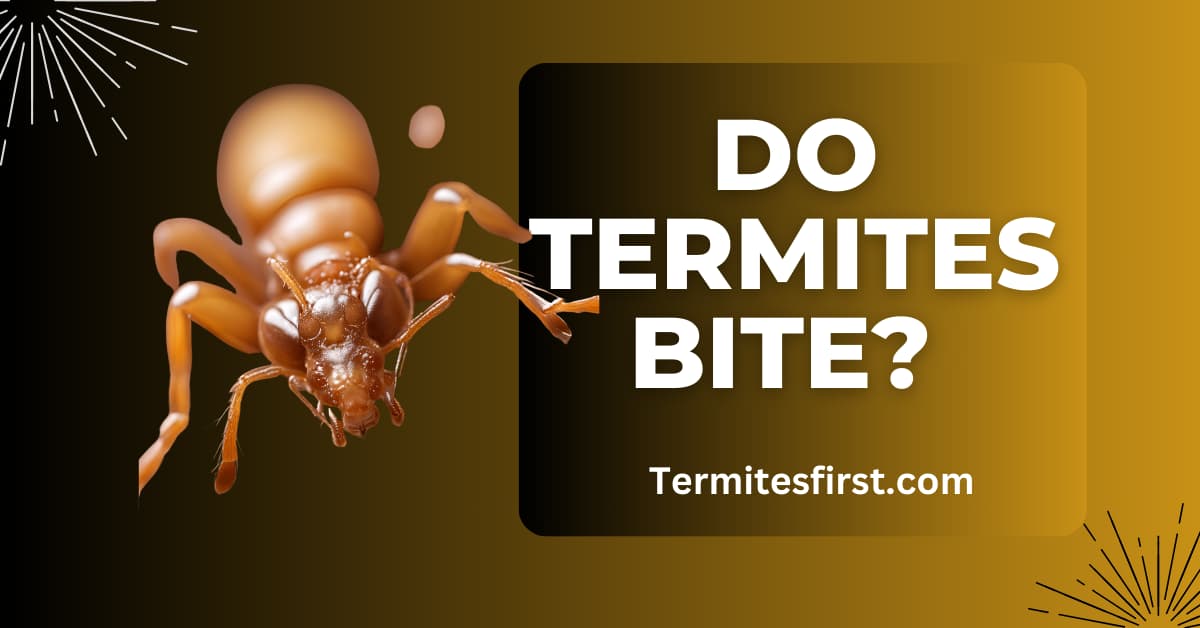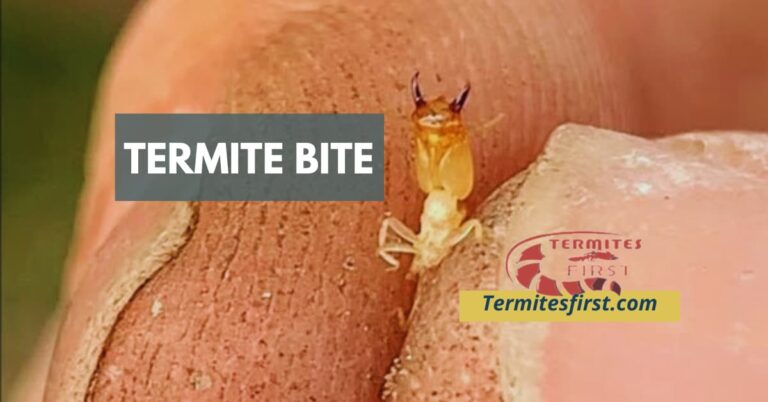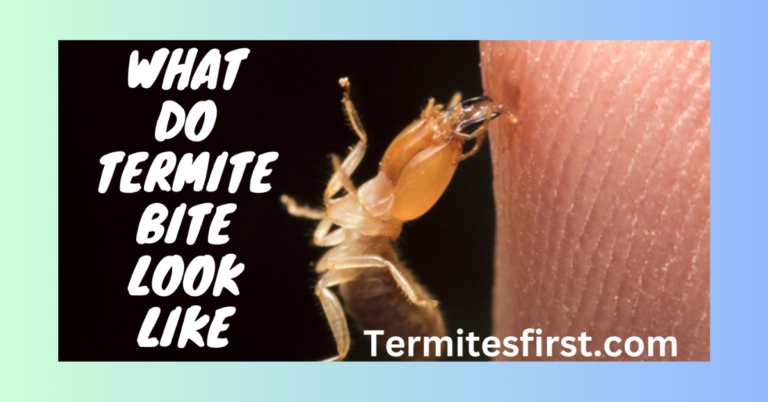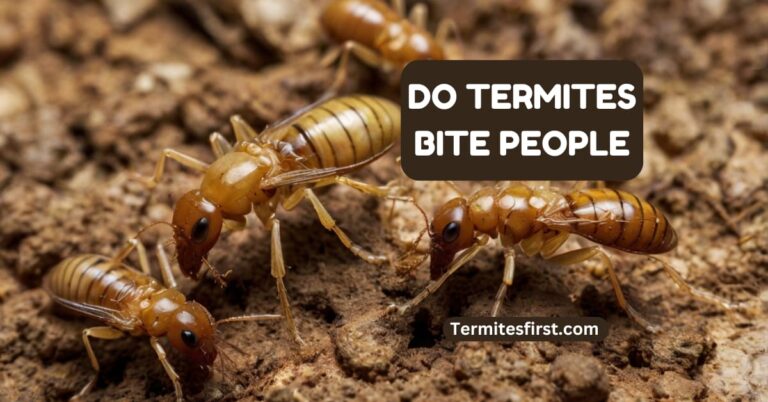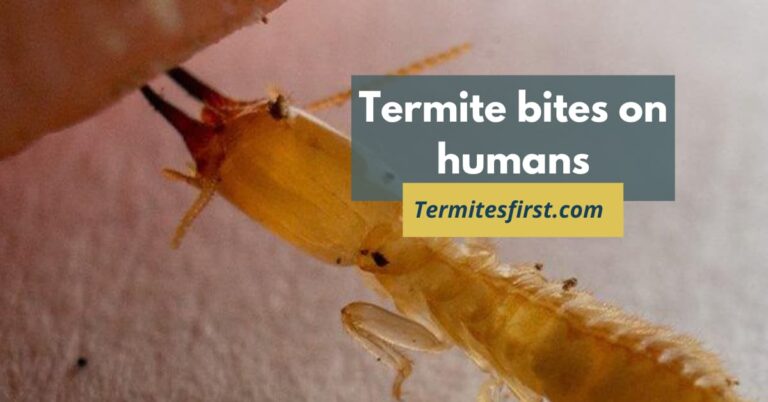Do Termites Bite? | Prevention and Protection from Termite Bites
When it comes to termites, a common question that arises is, “Do termites bite?” Understanding the behavior of these creatures is crucial for homeowners looking to protect their house. Termites themselves do not bite humans, but they can cause significant damage by feeding on wood and other cellulose materials. It’s essential to be aware of the symptoms of a termite infestation, bug bites, to address the issue promptly and prevent costly repairs. In this post, I will delve into the topic of termite bites, discussing how termites interact with humans, offering insights on effective termite control measures, and what people should do if they encounter them.
Key Takeaways
- Termites do not bite humans as they primarily feed on wood and other cellulose materials.
- If you notice bite-like marks, it is more likely caused by other insects like bed bugs or mosquitoes rather than termites.
- To prevent insect bites, use insect repellent, keep your surroundings clean, and seal entry points in your home.
- Regularly inspect and maintain your property for any signs of termite infestation to protect your home from structural damage.
- Educate yourself on the differences between various insect bites to accurately identify the source and take appropriate action.
- By staying vigilant and taking proactive measures, you can safeguard your property and ensure a termite-free environment.
Can Termites Bite
The Reality
Termites are not known to actively seek out humans for biting. Bites on humans by termites are extremely rare occurrences. Termite bites are generally considered mild and rarely cause significant harm.
Termite bites on humans are often accidental and occur when the insects come into contact with exposed skin. These bites typically result in minor irritation and discomfort, similar to a mild rash.
It is crucial to note that termite bites do not pose any significant health risks to humans. The primary concern with termites lies in the damage they can inflict on structures rather than their biting behavior.
Risk Factors
Termites pose a significant risk to homes as they can cause extensive structural damage over time. An untreated termite infestation can lead to weakened foundations, walls, and wooden structures within a building.
Preventing termite infestations is essential to safeguarding the structural integrity of properties. Regular inspections, timely detection, and effective treatment methods are vital in protecting buildings from termite damage.
The financial implications of termite infestations can be substantial, with repair costs running into thousands of dollars. Taking proactive measures such as maintaining proper ventilation and reducing moisture levels can help deter termites from infesting homes.
Identifying Termite Bites
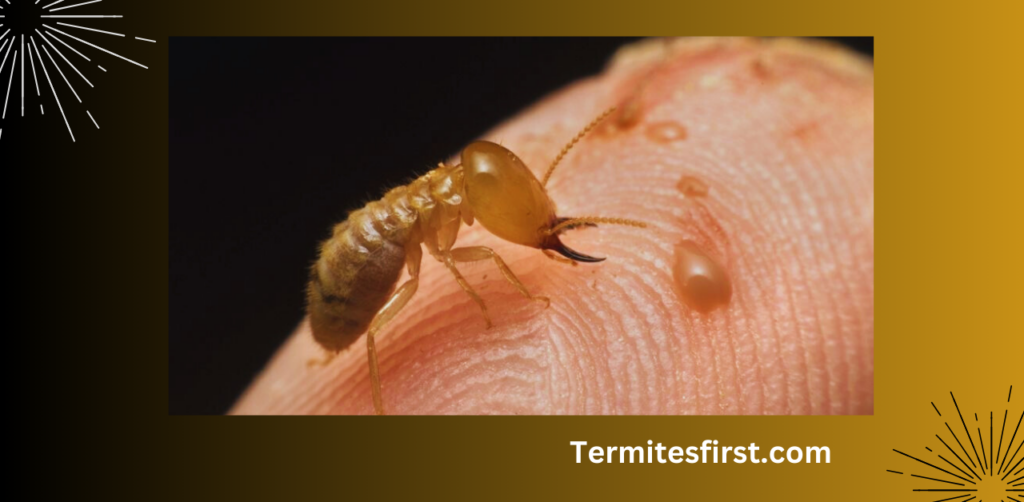
Appearance
Termites are small insects with soft bodies, typically pale or white in color. They vary in size depending on their role within the colony, with workers being smaller than soldiers. The structure of termite colonies is complex, comprising workers, soldiers, and reproductive individuals.
Termite colonies are organized hierarchically, with each member having specific duties. Workers are responsible for gathering food and maintaining the nest, while soldiers protect the colony from threats. Reproductives are tasked with expanding the colony through reproduction.
Symptoms
Symptoms of termite bites are rare due to termites’ feeding habits and mouthparts designed for chewing wood rather than biting humans. Skin reactions to termite bites may include redness, itching, and swelling, similar to other insect bites. It’s uncommon to immediately notice a termite bite because termites feed discreetly without causing pain.
Recognizing termite bites can be challenging since they are often mistaken for other insect bites or skin conditions. In some cases, individuals may experience mild skin irritation following exposure to termites. Seeking medical advice is recommended if unusual symptoms persist after suspected contact with termites.
Differentiating Bites
Termite vs Other Insects
Termites differ from other insects in their feeding habits, primarily targeting wood and plant-based materials. Unlike some insects that feed on blood or nectar, termites are decomposers that break down cellulose. Various termite species are found worldwide, each with unique characteristics and behaviors.
Termite bites usually result in mild skin conditions due to their feeding habits. While some insects may cause severe reactions, termite bites are generally non-threatening. Understanding the differences in insect bites can help identify the source of skin irritations more effectively.
- Termites feed on wood and plants
- Different species of termites worldwide
- Mild nature of termite bites compared to other insects
Skin Conditions
Skin conditions from termite bites are typically mild, causing minimal discomfort. Compared to other insect bites that can lead to allergic reactions or infections, termite bites are often innocuous. The slight irritation from a termite bite usually subsides quickly without requiring medical attention.
Identifying potential skin conditions resulting from insect bites is crucial for appropriate treatment. Recognizing the distinctive characteristics of termite bites can aid in differentiating them from other common insect bites, facilitating prompt and suitable care.
- Termite bites are usually harmless
- Understanding differences in insect bite reactions
- Importance of recognizing distinctive features of termite bites
Preventing Bites
Preventing Bites
Taking proactive steps is essential to shield oneself from bug bites. Maintaining a dry environment is crucial in preventing bug bite incidents. Regular inspections play a vital role in detecting termites early, avoiding potential bites.
To safeguard against termite bites, individuals should ensure their surroundings are dry and sealed. Inspections help in identifying any signs of termite activity promptly. Early detection can prevent severe damage caused by termite jaws.
Home Protection
Shielding homes from termite damage involves various strategies. Building barriers around the property can deter termites from entering. Sealing wood surfaces effectively prevents termite access and potential bug bites.
Proper drainage is key to reducing the risk of termite infestations. It helps in keeping the soil around the house dry, discouraging termites from establishing colonies nearby. By maintaining good drainage practices, homeowners can significantly lower the chances of termite bites.
Protecting Your Property
Inspection Tips
To conduct a thorough inspection for termite activity, start by checking both indoors and outdoors. Look for mud tubes, hollow-sounding wood, or discarded wings near windows and doors. Inspect wooden structures like beams, furniture, and even cardboard boxes.
Common areas where termites hide include damp or moist environments like basements, attics, and crawl spaces. Pay close attention to wooden foundations, as termites often enter through cracks. Outdoors, check for mud tunnels along the foundation and tree stumps.
Professional Help
When facing severe termite infestations, seeking professional help is crucial. Experts can accurately assess the extent of the infestation and recommend suitable treatment methods. Termite specialists may use bait systems, liquid termiticides, or fumigation to eradicate the pests.
Different treatment methods are available for termite control. Fumigation involves sealing the structure and releasing gas to eliminate termites. Liquid termiticides create a protective barrier around the property’s perimeter to prevent termite entry. Bait systems attract termites away from structures towards poisoned baits.
In my experience dealing with a termite infestation in my home, I found that professional help was essential in effectively eradicating the pests. The expert inspection revealed hidden colonies within walls that I would have missed during my own checks. Their targeted treatment methods not only eliminated the existing termites but also prevented future infestations.
Inspecting both indoors and outdoors regularly has become a routine maintenance task for me now. By staying vigilant and catching any signs of termite activity early on, I can address the issue promptly before it escalates into a severe infestation. This proactive approach has saved me time, money, and stress in the long run.
Conclusion:
In conclusion, understanding whether termites bite is crucial for protecting both yourself and your property. By recognizing the signs of termite bites and taking preventive measures, you can safeguard against potential damage. Identifying these pests early on and implementing effective control strategies are essential steps in maintaining a termite-free environment. Remember, swift action is key to minimizing the risk of infestations and ensuring the safety of your home. Stay informed, stay vigilant, and prioritize termite prevention to preserve the integrity of your property.
FAQ’s:
Yes, termites can bite humans. While they are not known to transmit diseases through their bites, some people may experience allergic reactions or skin irritation from termite bites.
Termite bites are often mistaken for other insect bites due to their similarity in appearance. Termite bites typically result in small red marks on the skin, and they may cause itching or mild pain.
Different insect bites have varying characteristics. Termite bites are usually smaller than mosquito bites but larger than ant bites. Consulting with a pest control professional can help accurately identify the source of the bite.
To prevent termite bites, it is crucial to address any termite infestations in your home promptly. Regularly inspecting your property for signs of termites, such as mud tubes or damaged wood, can help prevent potential encounters with these pests.
Protecting your property from termites involves implementing preventive measures such as maintaining proper ventilation, reducing moisture levels, and sealing cracks and crevices where termites could enter. Scheduling regular termite inspections by professionals can help detect infestations early.

